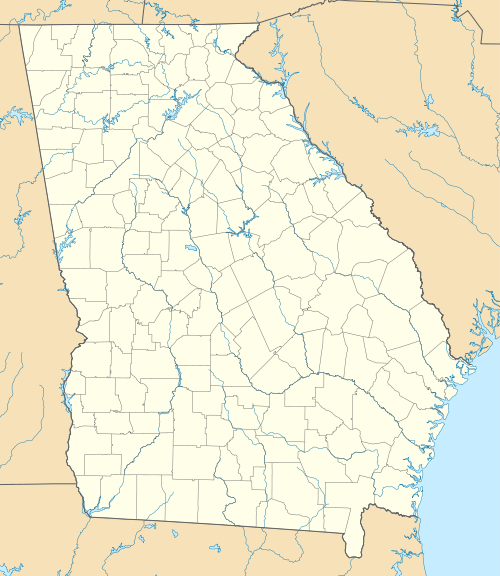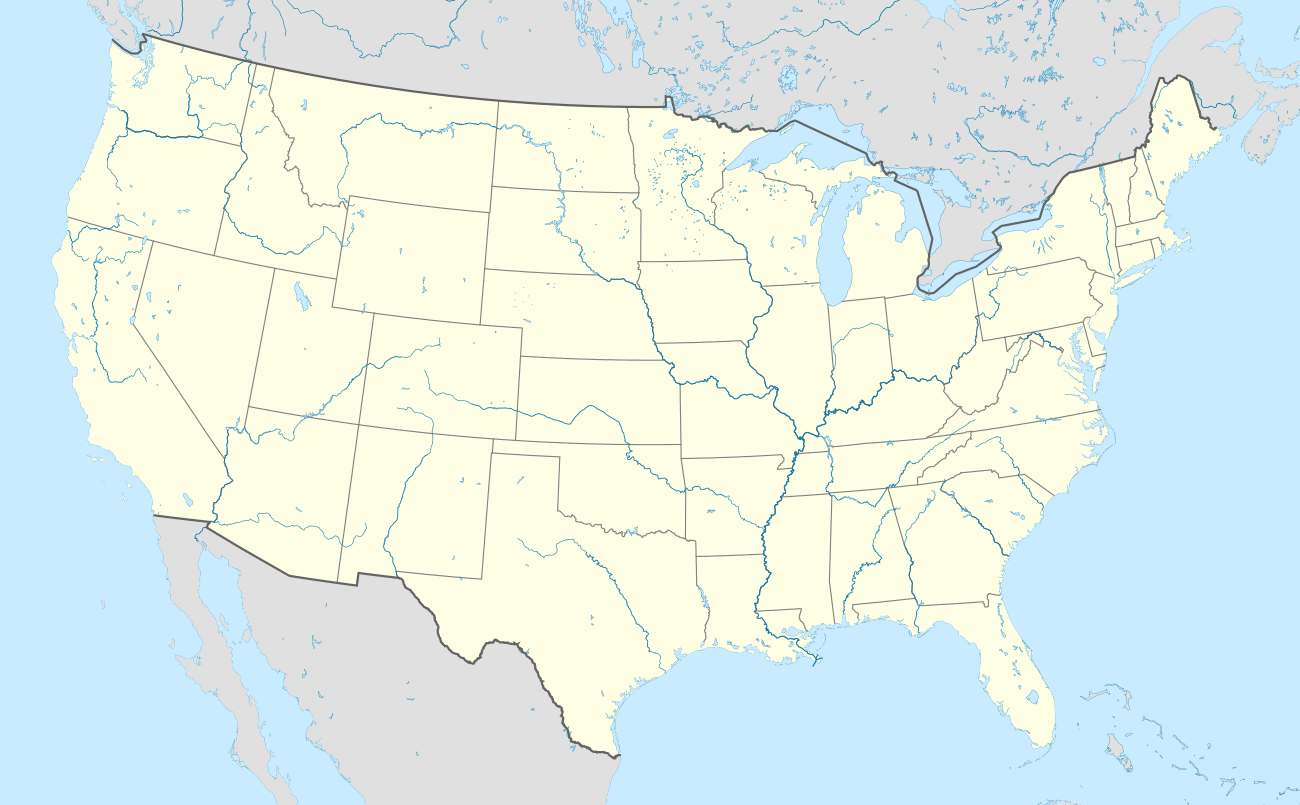Old City Cemetery (Macon, Georgia)
The Old City Cemetery is a small cemetery located in Macon, Georgia, United States. Established in 1825, it saw burials until the 1840s, when Rose Hill Cemetery, a much larger cemetery in the city, opened. Following this, the cemetery fell into ruins, and following failed efforts in the late 1800s to convert the area to a public park, the cemetery was restored in the 1970s. The cemetery is located in the Macon Railroad Industrial District, which is listed on the National Register of Historic Places.[1]
Part of the cemetery's entry arch (2015) | |
 Shown within Georgia (U.S. state)  Old City Cemetery (Macon, Georgia) (the United States) | |
| Details | |
|---|---|
| Established | 1825 |
| Location | |
| Country | United States |
| Coordinates | 32°49′53″N 83°37′20″W |
| Type | City |
| Owned by | Macon–Bibb County |
History
The 4-acre (1.6-hectare) cemetery was established in 1825, just southeast of what is today downtown Macon, Georgia.[2] Referred to as "God's Acre" by Maconites, individuals interred at the cemetery include a major from the American Revolutionary War and the daughter of Jared Irwin, a Governor of Georgia.[2] By the 1830s, however, the city council of Macon feared that the City Cemetery would soon become inadequate for Macon's needs, and appointed a commission to establish Rose Hill Cemetery, likely the first rural cemetery in the Southern United States.[3] This much larger cemetery opened in 1840 and quickly became the main burial place for the city.[4][5] The last burial to take place at the Old City Cemetery occurred a few years later in 1843.[2] Following this, the cemetery fell into ruins, with an 1891 article in The Telegraph describing it as “a wilderness, a ruined necropolis, the habitation only of dogs and vermin; the wasteland in the slums of a city.”[2] That same year, the Macon city council began to exhume the hundreds of bodies that were buried in the cemetery, with the intent of converting the cemetery to a public park called "Founder's Park" that would feature a monument describing the cemetery. However, these plans never came to fruition.[2] In 1914, the fire department put out a fire at the cemetery, caused by sparks from a passing streetcar.[2] Throughout the 20th century, local churches and organizations such as the Daughters of the American Revolution performed upkeep and repairs to the city-owned cemetery,[2] which underwent a restoration in the 1970s.[6]
References
- "Macon Railroad Industrial District". National Register of Historic Places. National Park Service. June 12, 1987. Retrieved August 14, 2020.
- Corley, Laura (August 16, 2019). "'God's acre.' Remembering sacred spot near downtown Macon abandoned in 1891". The Telegraph. McClatchy. Retrieved August 13, 2020.
- Cothran, James R.; Danylchak, Erica (2018). Grave Landscapes: The Nineteenth-Century Rural Cemetery Movement. University of South Carolina Press. ISBN 978-1-61117-799-2 – via Google Books.
- "Top 5 Historic Macon Cemeteries". Gateway Macon. Retrieved August 13, 2020.
- "Macon's Old City Cemetery (1825-1840)". Southern Graves. Retrieved August 14, 2020.
- Fabian, Liz (March 11, 2017). "Historic Macon peddles new bike path of industrial district's world-class past". The Telegraph. McClatchy. Retrieved August 14, 2020.
External links

- Find a Grave